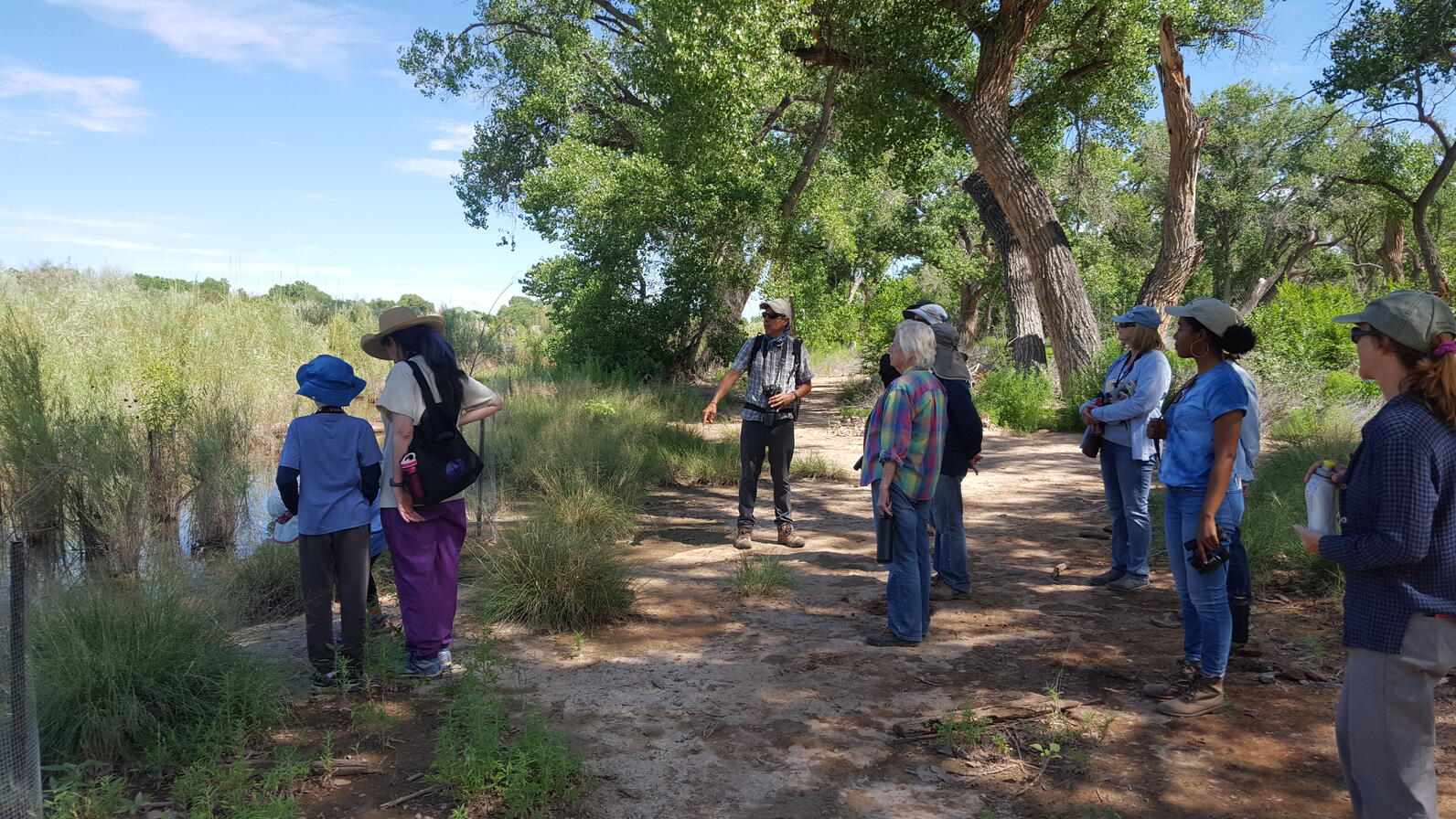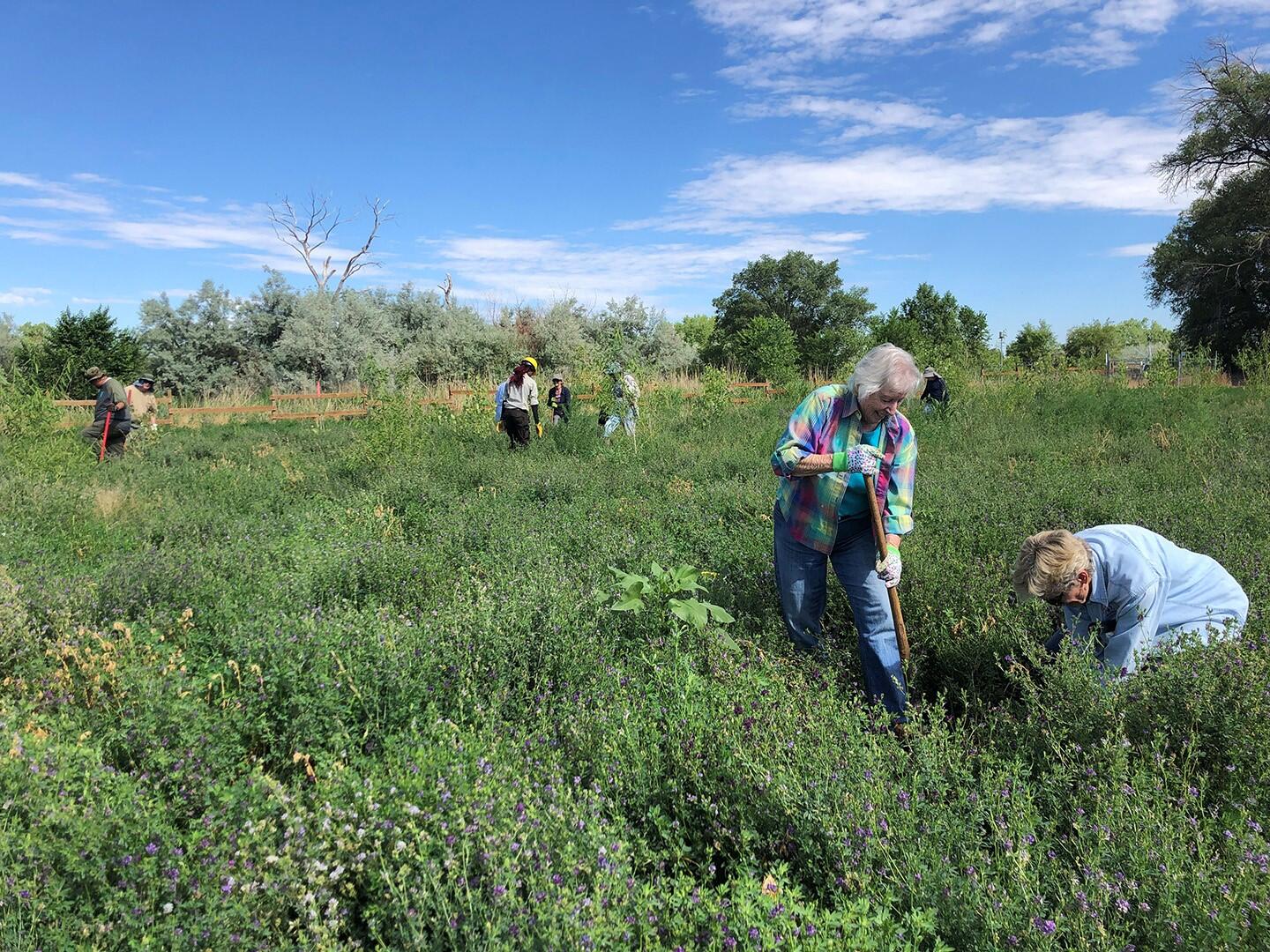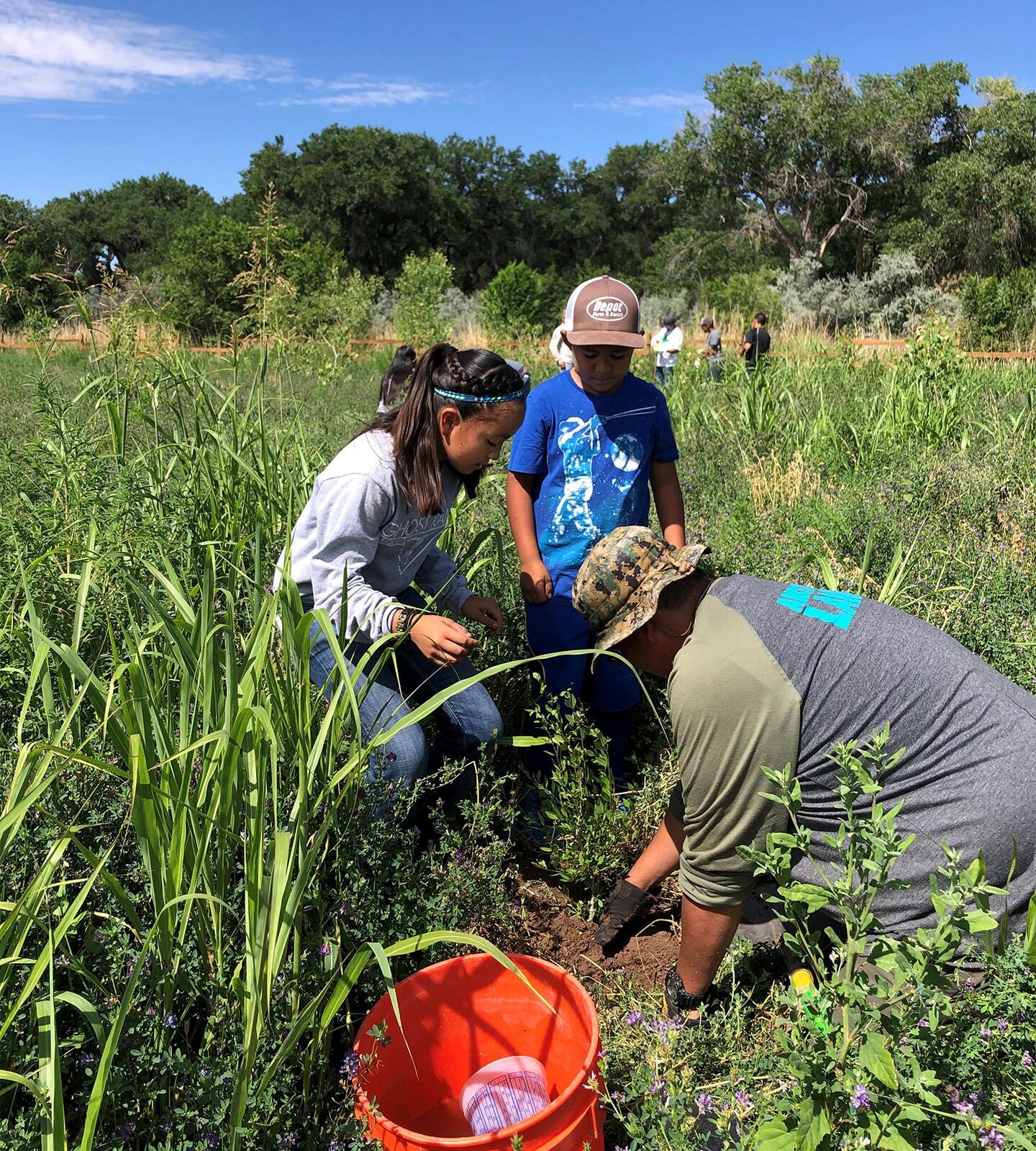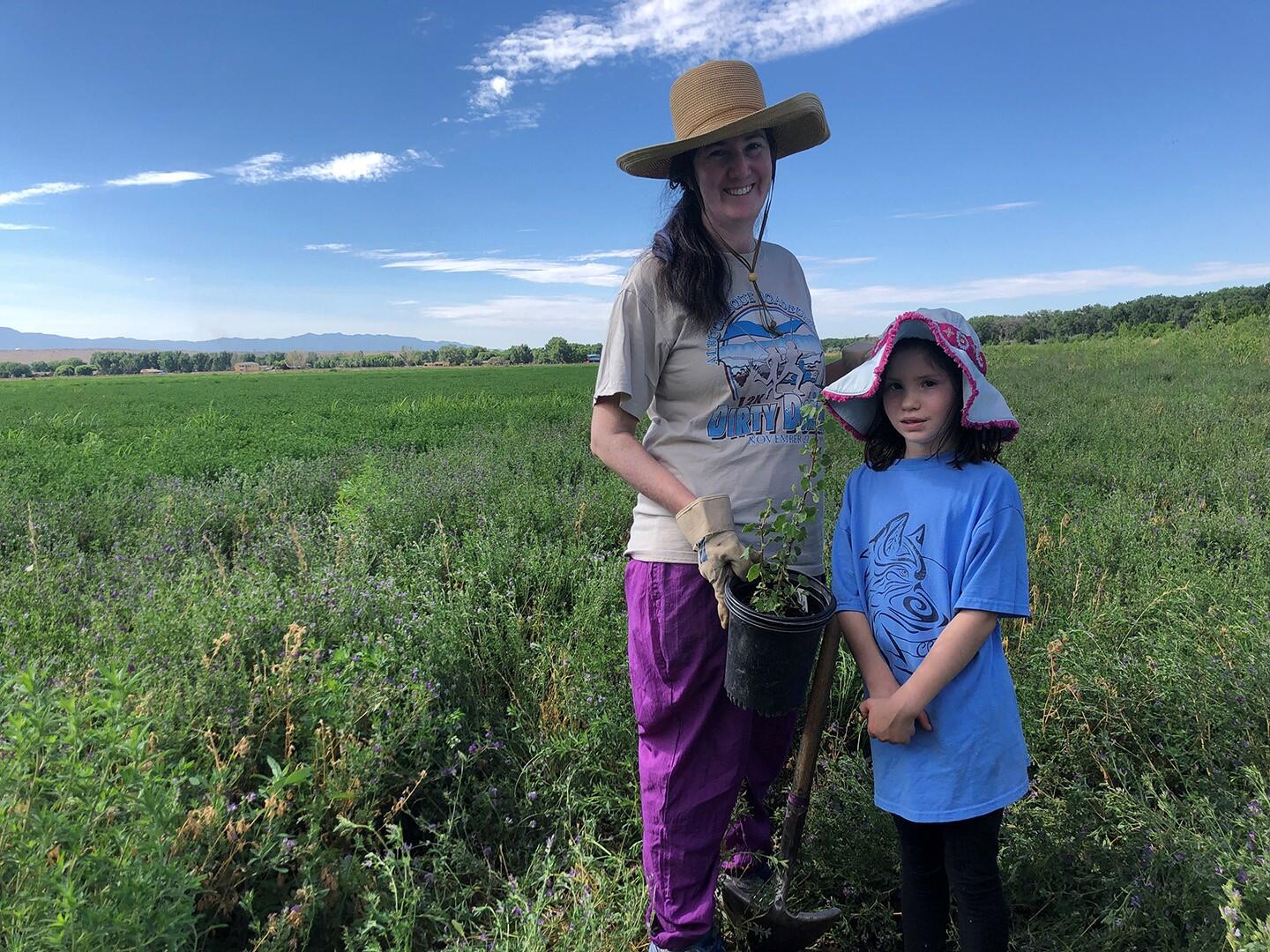July in Albuquerque is hot. Residents stay clear of heat rising from miles of concrete and asphalt by taking cover inside while hoping summer monsoons will give momentary relief. On July 2nd, youth from Pueblo of Isleta Behavioral Health Services, Audubon New Mexico members and chapter leaders, and community members also hoped for rain, not just for afternoon showers that decrease high temperatures, but for a strong downpour to water newly planted Wax Currant and Serviceberry along the Rio Grande Floodplain at Valle de Oro National Wildlife Refuge.
For a second scorching July, Audubon New Mexico and partners committed to mobilizing people power that restores and revives native habitat in the Rio Grande Bosque while also creating advocates for its future. Fifty volunteers and staff put 119 plants in the ground, learned about how a healthy and resilient Rio Grande protects birds and is good for people, and produced vibrant art using native plants as inspiration.

This effort is a part of Audubon New Mexico’s Ribbon of Life Initiative – a strategy that drives our work on the Rio Grande. By facilitating meaningful connections to the Rio Grande through hands-on actions, collaboration, and educational and skill building opportunities, we will get closer to bringing back historic and natural processes to the Middle Rio Grande Basin for birds, people, and wildlife.

After a short morning orientation, volunteers applied heavy amounts of sunscreen and tromped off with one of three groups to complete a cycle of the day’s activities. Paul Tashjian, Director of Freshwater Conservation, and Amy Erickson, Avian Biologist led their group to the Bosque trail making sure to point out well-camouflaged Ash-throated Flycatchers and soaring raptors. The walk was about exploring how healthy water systems relate to healthy ecosystems, the habits of riparian birds, and the history of tribes, cities, and organizations doing restoration work on the Rio. Participants were encouraged to lean into their own curiosities about the Bosque.

“What are these trees here?” Paul asked. “Cottonwood…” The small group replied quickly and casually while watching fuzzy cottonwood fibers float through the air. Their ages ranged from eight to much older. “Right, is there anything you notice about them?” The group described various features a little less confident now. “Look around you. These Cottonwood are all the same size. I want to introduce you to the class of ’41.”
In 1941, the rain never stopped in New Mexico. The state received an average of 26.25 inches. A significant jump from the 13.96 average at the time. Heavy rains and runoff from snow packed mountains washed out roads and caused the Rio Grande to overbank. With the river newly unencumbered, it flowed into the historic floodplain where it met cottonwood seeds adapted over thousands of years to germinate in water. The clouds of fluff no longer aimlessly floated through the city like tumbleweeds – they grew into many of the cottonwoods we know and love today.
“These trees are part of the reason why we do this work,” explains Amy, “They cannot live forever as the only ones – the only class. By bringing back natural processes we can ensure every generation can enjoy the iconic Cottonwood Tree and the birds that depend upon them”. A few moments later, the group keys in on rustling low hanging cottonwood branch. The younger participants light up as Amy points out two colorful native neotropical migrants, a barn swallow and summer tanager. Everyone left the Bosque that day with an excitement for the Rio Grande’s Bosque and the special birds that they can view in their own backyard.

Special thanks to our partners at Pueblo of Isleta Behavioral Health Services, Conservation Legacy’s Ancestral Lands Program, Valle de Oro National Wildlife Refuge, Friends of Valle de Oro, and the McCune Foundation for making this program a success and committing to keeping the Rio Grande floodplain healthy and resilient.






